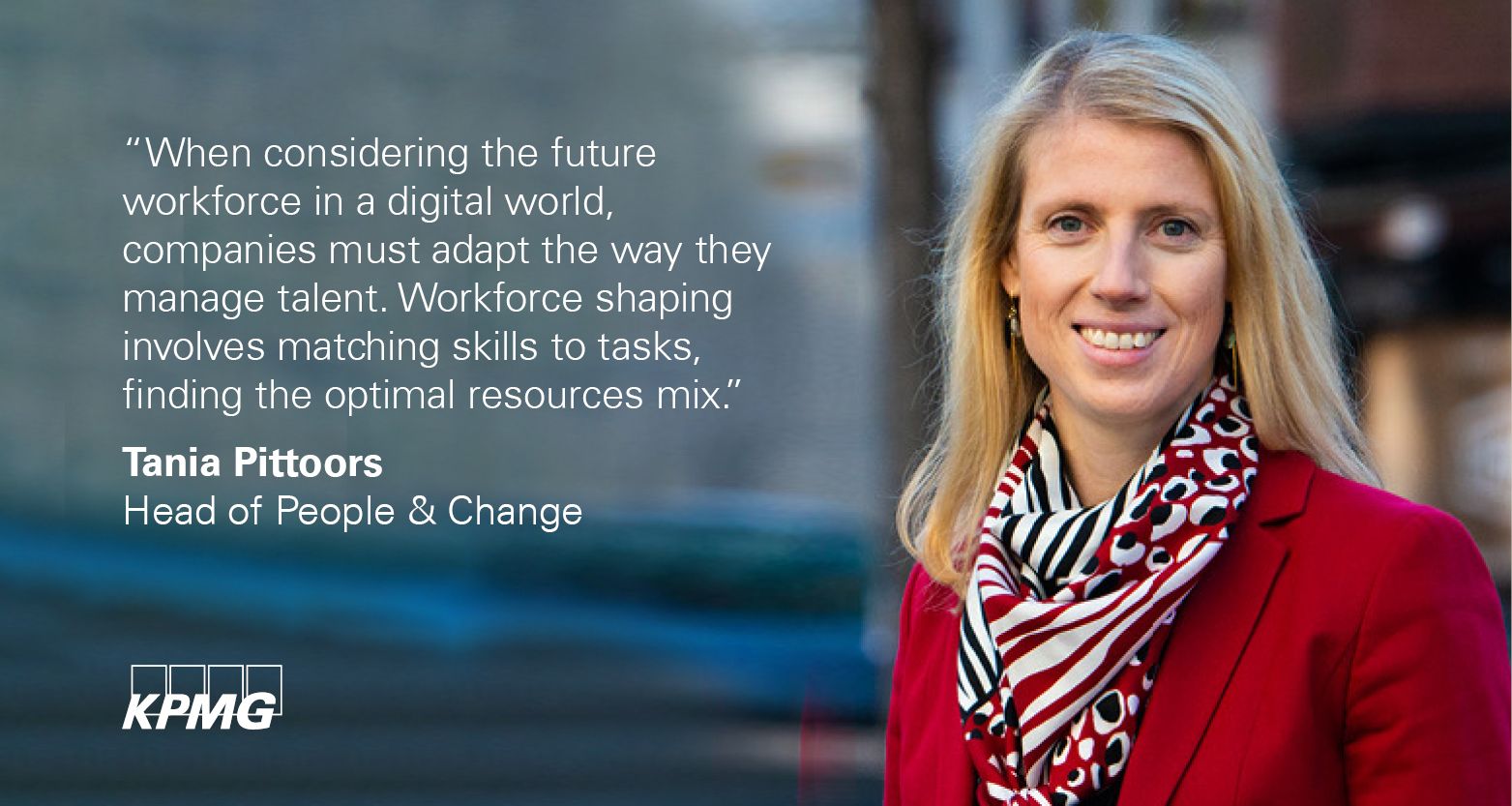Digital transformation was high on most organizations’ agendas even before COVID-19 and has only risen in importance since the pandemic, compelling organizations to rethink their operating models, technologies, and ways of working. The impact of digital, including AI and intelligent automation, has also reshaped the workforce, with new skills and tasks emerging, and others either evolving or becoming threatened.
According to a recent KPMG-commissioned study conducted by Forrester Consulting, 63 percent of business leaders are prioritizing an ‘aligned and empowered’ workforce to support digital transformation. This should enable them to expand their talent base and work out the appropriate mix of different skills needed to meet growing demand. By understanding how transformation affects their workforce, organizations can respond faster to changes, whether it’s taking on new competitors, moving into new markets, or finding new ways to serve customers. For example, the pandemic has tested companies’ ability to serve customers remotely – some have risen to the challenge better than others.
The C-suite agrees that technical skills are becoming more and more important. The KPMG 2020 Global CEO Outlook shows that one of the biggest threats to long-term growth is talent risk; this issue rose eleven places compared to the previous year’s survey. Additionally, in the Harvey Nash / KPMG CIO Survey 2020, a majority (62 percent) of respondents say a skills shortage is preventing their organization from keeping up with the pace of change.
Clearly, upskilling is now more critical than ever. Another KPMG survey, The Future of HR in the new Reality, found that 77 percent of HR leaders plan to upskill up to 30 percent of their workforce in digital capabilities over the next 2–3 years.

Source: A commissioned study conducted by Forrester Consulting on behalf of KPMG, July 2020
Adapting your workforce to a permanent storm
COVID-19 alone hasn’t singlehandedly changed the world of work. But it has forced organizations to address a number of workforce challenges sooner than anticipated. Like re-skilling existing employees, bringing in new and temporary workers, adjusting to remote working, and integrating people and machines.
The World Economic Forum (WEF) calls this a “double disruption” of automation and COVID-19’, with a huge churn of workers and host of new roles. And, frankly, traditional workforce planning won’t be able to address this huge task. HR leaders need a new way to approach a future filled with uncertainty and constant, fast change. According to The Future of Jobs Report 2020, from the WEF:

Source: The World Economic Forum, The Future of Jobs Report, 2020
Workforce shaping
Workforce shaping introduces a dynamic approach to planning resource needs. Using horizon scanning and scenario planning, along with continuous dialogue with business units, organizations can chart what skills they need in several years’ time — and where they need them.
It’s also about understanding the impact of digital technologies – primarily automation and AI – and how humans and machines will work together to drive business value.
Factors such as operating models, back office transformation and automation will all impact the way that tasks are carried out, which in turn drives the demand for different skills and capabilities.
In the KPMG survey The Future of HR 2020, those companies that embraced workforce shaping reported greater levels of value add to the business from People/HR Management.
Upskilling will be an integral part of this approach, and the scale of learning and development effort should not be underestimated, as new roles such as data scientists emerge. Additionally, there is likely to be an increasing use of contingent, temporary or gig workers, with organizations seeking to access capabilities on an as-a-service basis — via managed services. This can help them acquire vital automation capabilities and reduce fixed office costs. Organizations’ footprints are also likely to be impacted by the growth in activities carried out virtually in the cloud.

Base: 780 professionals involved with digital transformation strategy decisions
Source: A commissioned study conducted by Forrester Consulting on behalf of KPMG, July 2020
Discover more
The pace of disruption presents an opportunity to transform the HR function. We can work with you to build a multi-year workforce roadmap, which can align your technological and human capabilities with your business needs, and give you the flexibility to adapt your skills and resources to fast-changing markets.




